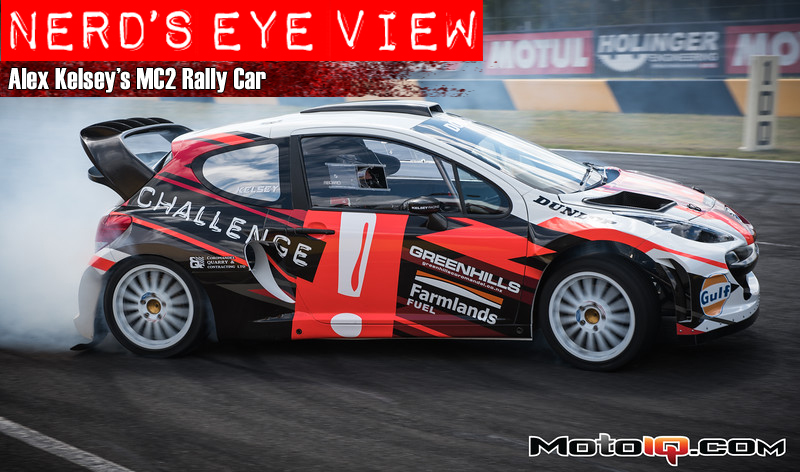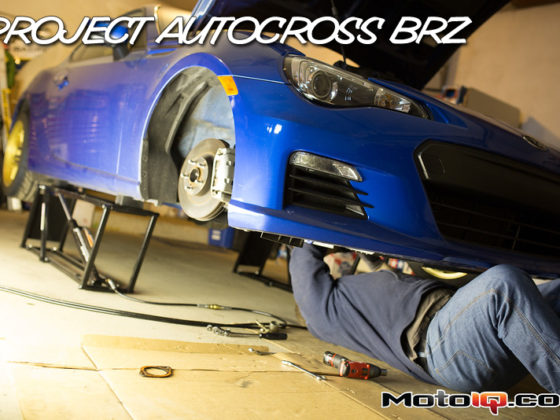,
 Looking into the underside of the rear hatch cover, you can see the Kevlar rear inner fenders.
Looking into the underside of the rear hatch cover, you can see the Kevlar rear inner fenders. Putting on the rear hatch is a two-man job. It latches down quickly though with the two latches on the roof helping to secure the hatch in place.
Putting on the rear hatch is a two-man job. It latches down quickly though with the two latches on the roof helping to secure the hatch in place. After the hatch is installed, the small side windows are installed. If the spare wheel and tire were mounted in back, there would definitely be more time involved to do a wheel change.
After the hatch is installed, the small side windows are installed. If the spare wheel and tire were mounted in back, there would definitely be more time involved to do a wheel change. Rear downforce is generated with two wing elements. Rally cars often have numerous vertical elements which I believe are designed to add stability while the car is sideways along with forcing the air to go towards the rear edge of the wing and hit the vertical element on the trailing edge.
Rear downforce is generated with two wing elements. Rally cars often have numerous vertical elements which I believe are designed to add stability while the car is sideways along with forcing the air to go towards the rear edge of the wing and hit the vertical element on the trailing edge. The vertical element at the trailing edges of the wings should contribute significantly to the rear downforce generation in a similar fashion to the massively tall and vertical spoilers used in NASCAR.
The vertical element at the trailing edges of the wings should contribute significantly to the rear downforce generation in a similar fashion to the massively tall and vertical spoilers used in NASCAR. Recaro seats compatible with the Hans device keeps the occupants safe. As is common on rally cars, the side of the cage is fabricated using to bars forming an ‘X’ with the flat plate creating the super strong gusset connecting the two tubes. There is also the angled bar going from the bottom of the cage at the bottom front of the cage to the roof to aid in roll-over protection and keeping the roof from collapsing.
Recaro seats compatible with the Hans device keeps the occupants safe. As is common on rally cars, the side of the cage is fabricated using to bars forming an ‘X’ with the flat plate creating the super strong gusset connecting the two tubes. There is also the angled bar going from the bottom of the cage at the bottom front of the cage to the roof to aid in roll-over protection and keeping the roof from collapsing. From this angle, you can see how the angled bar is connected to the top part of the X-door bars to tie everything together and add strength. The interior door panel has been replaced with a lighter carbon panel. The glass has also been replaced with Lexan and the little integrated window opening.
From this angle, you can see how the angled bar is connected to the top part of the X-door bars to tie everything together and add strength. The interior door panel has been replaced with a lighter carbon panel. The glass has also been replaced with Lexan and the little integrated window opening.


